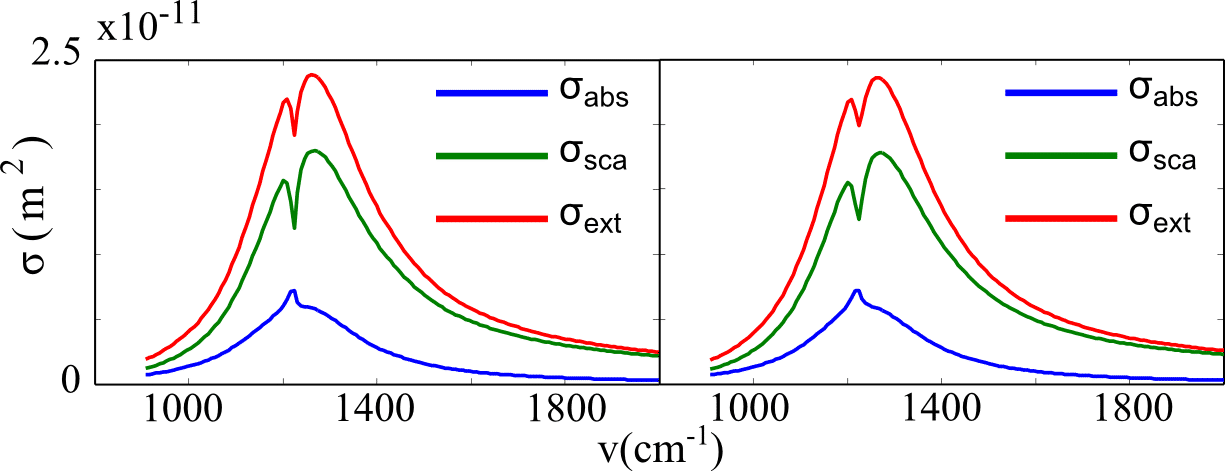
Role of Scattering and Absorption in Surface Enhanced Infrared Spectroscopy
The specificity of a sample`s vibrational infrared response opens the door to identification methods that fingerprint chemical compounds in both life and physical sciences. Surface Enhanced Infrared Spectroscopy (SEIRS), based on the nanofocusing properties of plasmonic infrared antennas, enables to access the vibrational response of minute quantities of samples which are below the sensitivity limit of conventional spectroscopic techniques [1].
Most SEIRS experimental setups are designed to measure the transmission signal, related to the antenna extinction spectrum. We focus on the two contributions of the antenna-sample system to the extinction: scattering [2] and absorption [3]. We develop a general analytical model that considers intrinsic and radiative antenna losses and provides a comparison of the scattering, absorption and extinction spectra. For a situation where the molecular resonance is tuned close to the antenna near-field resonance, we show that the interaction of the molecule with the antenna can give rise to a positive resonance in the absorption spectrum, whereas the scattering is always modified as a negative antiresonance (Fig. 1 shows such a case for a phononic sample coupled with a plasmonic antenna). We find that the interplay between the scattering and absorption leads to a decrease of the extinction signal when the absorption spectrum exhibits a positive resonance [3].
We conclude that the scattering-based experimental techniques may lead to further increase of the SEIRS fingerprint signal, which is otherwise diminished in the transmission experiments. The consideration of the experimental configuration is therefore a key aspect leading to the improvement of SEIRS sensitivity.

Fig. 1: Extinction, scattering and absorption spectra of a plasmonic antenna interacting with a vibrational sample showing a narrowband vibrational optical response (left numerical, right analytical model).
[1] P. Alonso-González et al., Phys. Rev. Lett. 110, 203902 (2013).
[2] B.Gallinet and O. Martin, Phys. Rev. B 83, 235427 (2011).
[3] R. Adato, et al., Nano Lett. 13, 2584-2591 (2013).
tomas_neuman001@ehu.es
Powered by Eventact EMS